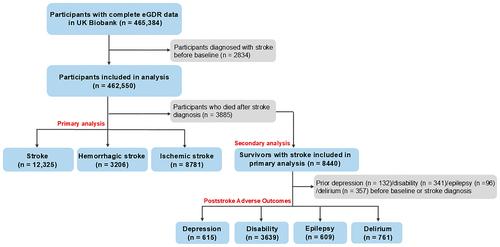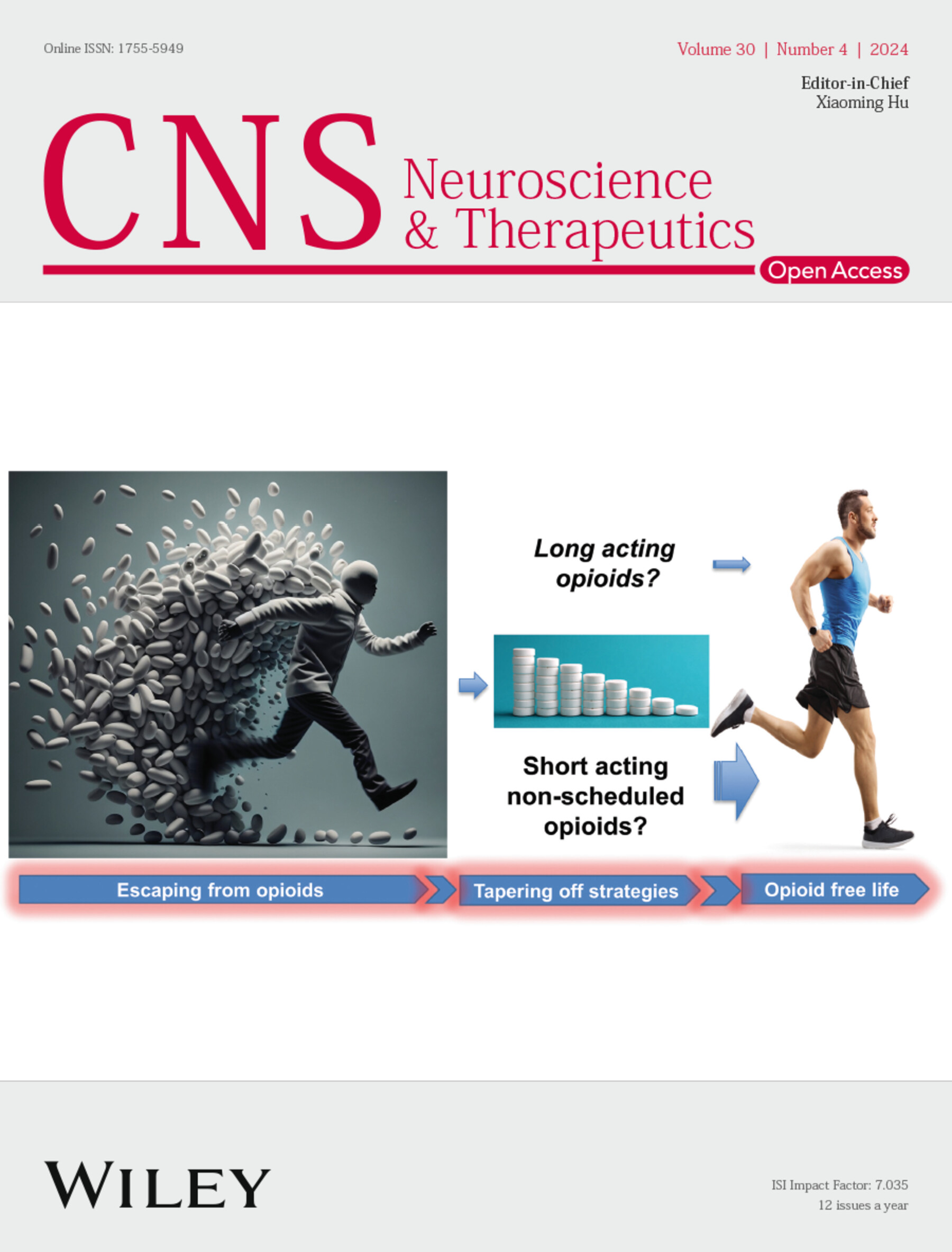Associations of Estimated Glucose Disposal Rate With Stroke Risk and Poststroke Adverse Outcomes: A Prospective Cohort Study
Abstract
Aims
This study investigated the relationship between estimated glucose disposal rate (eGDR), a validated marker of insulin resistance, and stroke subtypes and poststroke outcomes. Despite eGDR's established role in predicting cardiovascular outcomes, its impact on stroke risk and prognosis has not been fully explored.
Methods
This study included 462,550 participants from the UK Biobank with eGDR assessments, and participants were stratified into three categories based on tertiles of eGDR. The primary outcomes were stroke and its subtypes (ischemic and hemorrhagic stroke). Cox proportional hazard models and restricted cubic spline regression were used to analyze associations between eGDR and outcomes. Secondary analyses investigated poststroke adverse events (depression, disability, epilepsy, and delirium). Mediation analyses were conducted to explore the underlying mechanisms driven by inflammatory markers, eGDR, and stroke.
Results
During a median follow-up of 13.9 years, 12,325 stroke cases were recorded. Compared to the lowest eGDR tertile (< 6.525 mg/kg/min), individuals in the highest tertile (> 8.494 mg/kg/min) demonstrated a significantly reduced risk of stroke (HR = 0.53, 95% CI: 0.50–0.56), particularly ischemic stroke (HR = 0.53, 95% CI: 0.50–0.57). Higher eGDR levels were also associated with a decreased risk of poststroke adverse outcomes (HR = 0.83, 95% CI: 0.73–0.94), with similar risk estimates observed for depression, disability, epilepsy, and delirium. Furthermore, inflammatory markers partially mediated the relationship between eGDR and stroke risk.
Conclusions
Elevated eGDR levels were associated with decreased risks of stroke and poststroke adverse outcomes. These findings suggest improving insulin sensitivity, as reflected by higher eGDR, maybe a potential therapeutic target for stroke prevention or stroke rehabilitation.


 求助内容:
求助内容: 应助结果提醒方式:
应助结果提醒方式:


